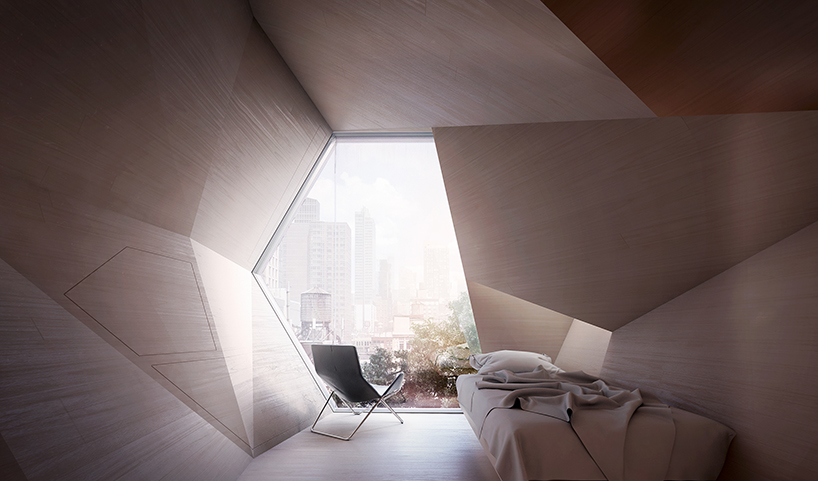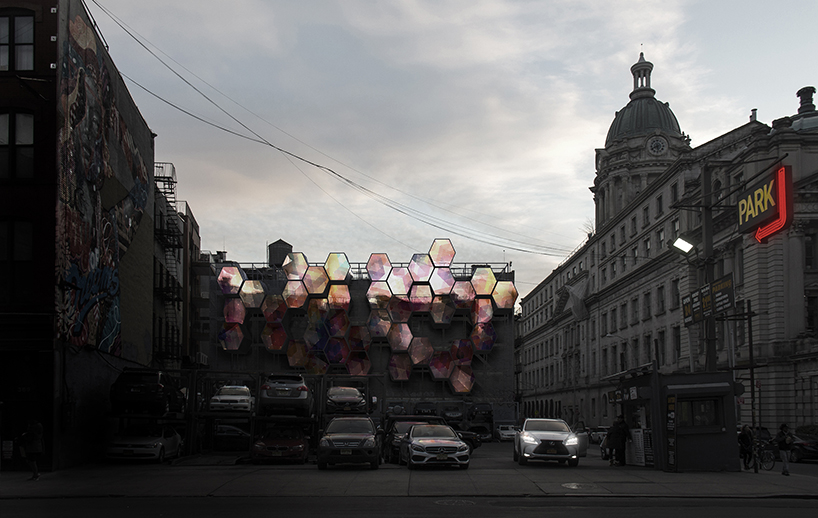Framlab is proposing a way to get people off the streets by providing comfortable, safe, and environmentally friendly 3D printed homeless shelters.
In recent years, the number of homeless people in New York has steadily risen. In fact, Coalition for the Homeless counted 62,351 homeless people this September 2017. What’s worse, 23,445 of them are children.
That’s the highest it’s been since the Great Depression.
Undoubtedly, city officials have struggled to deal with this issue. Could 3D printing provide a cost-effective solution to overcrowded homeless shelters?
Framlab is a New York City-based creative agency that may have an answer. Their solution is to create 3D printed micro-neighborhoods.
Their inspiration? Beehives. Essentially, small, hexagon-shaped housing pods that fit together like a honeycomb.
With their motto of, ‘Shelter with Dignity,’ the project provides a practical use of unused space in the Big Apple. The housing modules are packed together and connected to a scaffolding structure against an existing building.
What’s more, these small homes stack up and can be easily constructed and dismantled quickly. Also, the interior of the cluster is 3D printed from recyclable bioplastics.
The result? A cost-effective design that’s also good for the planet and offers a safe haven for homeless people in the city.
Plus, the ‘Homed’ proposal incorporates an oxidized aluminum exterior, which can also withstand New York City’s harsh weather.

3D Printed Homed Interiors Offer Welcoming, Safe Spaces
Inside the hexagons, the minimal space offers integrated smart technologies and basic furniture. This means a secure and comfortable space.
The minimalist design also offers the possibility of adaptation for a variety of rooms such as a bedroom or bathroom.
As Framlab explains on their website:
“The interior is made up of organic shapes of 3D printed plastic that – clad with wood laminate – create a warm and friendly environment. As the interior modules are 3D printed, an endless amount of spatial and functional needs can be met, and the space can be reconfigured and expanded upon when needed. This allows the unit to provide its resident with an ideal place to escape the hustle and bustle of the city – while keeping a hexagonal view of it.”
Of course, in a big city, space is quite limited. But the ‘Homed’ cluster rests on a solid scaffolding framework that provides a route up to the individual hexagon homes against the side of a building.
Amazingly, workers can construct up to 95 Homed units on a typical 50 x 70-foot wall, approximately 15 x 21 meters.
Framlab suggests that the pods can also hold a variety of smart technologies and capabilities.
This means a lockable entrance, extra storage space, outlets, ventilation, heat and sound insulation, and even “health monitoring.”
In addition to providing inhabitants with a city-view, the pods also look appealing from the streets. They can display digital artwork, public information, or commercials.
New York City has no shortage of empty, unused walls. So maybe it would be better to use them to help those in need, display digital artwork, and incorporate more 3D printed designs throughout the city.
What’s not to like? Check out the Framlab website to find out more information about their “Shelter with Dignity” project.
Source: Design Boom

License: The text of "3D Printed ‘Homed’ by Framlab Offers Shelter for New York’s Homeless" by All3DP is licensed under a Creative Commons Attribution 4.0 International License.